STL:遍历、查找、排序、拷贝和替换、算术生成、集合算法
文章目录
- STL:遍历、查找、排序、拷贝和替换、算术生成、集合算法
- 前言
- 1 常用遍历算法
- 1.1 for_each
- 1.2 transform
- 2 常用查找算法
- 2.1 find
- 2.2 find_if
- 2.3 adjacent_find
- 2.4 binary_search
- 2.5 count
- 2.6 count_if
- 3 常用排序算法
- 3.1 sort
- 3.2 random_shuffle
- 3.3 merge
- 3.4 reverse
- 4 常用拷贝和替换算法
- 4.1 copy
- 4.2 replace
- 4.3 replace_if
- 4.4 swap
- 5 常用算术生成算法
- 5.1 accumulate
- 5.2 fill
- 6 常用集合算法
- 6.1 set_intersection
- 6.2 set_union
- 6.3 set_difference
前言
本文包含STL常用遍历算法(for_each、transform)、STL常用查找算法(find、find_if、adjacent_find、binary_search、count、count_if)、STL常用排序算法(sort、random_shuffle、merge、reverse)、STL常用拷贝和替换算法(copy、replace、replace_if、swap)、STL常用算术生成算法(accumulate、fill)、STL常用集合算法(set_intersection、set_union、set_difference)。
概述:
(1)、算法主要是由头文件 <algorithm> <functional> <numeric> 组成
(2)、<algorithm> 是所有 STL 头文件中最大的一个,范围涉及到比较、 交换、查找、遍历操作、复制、修改等等
(3)、<numeric> 体积很小,只包括几个在序列上面进行简单数学运算的模板函数
(4)、<functional> 定义了一些模板类,用以声明函数对象 内建函数对象
1 常用遍历算法
学习目标: 掌握常用的遍历算法
算法简介:
(1)、 for_each 遍历容器
(2)、 transform 搬运容器到另一个容器中
1.1 for_each
功能描述: 实现遍历容器
函数原型:
-
for_each(iterator beg, iterator end, _func);// 遍历算法 遍历容器元素
// beg 开始迭代器
// end 结束迭代器
// _func 函数或者函数对象 (函数或者仿函数)
// 常用遍历算法 for_each
#include <iostream> // 包含标准输入输出流头文件
using namespace std; // 使用标准命名空间
#include <algorithm>
#include <vector>
// 普通函数
void print01(int val)
{
cout << val << " "; // 0 1 2 3 4 5 6 7 8 9
}
// 函数对象;仿函数
class print02
{
public:
void operator()(int val)
{
cout << val << " "; // 0 1 2 3 4 5 6 7 8 9
}
};
// for_each算法基本用法
void test01() {
vector<int> v;
for (int i = 0; i < 10; i++)
{
v.push_back(i);
}
// 遍历算法
for_each(v.begin(), v.end(), print01); // print01:普通函数放入函数名即可
cout << endl;
for_each(v.begin(), v.end(), print02()); // print02():仿函数需传入函数对象
cout << endl;
}
int main() {
test01();
cout << endl;
system("pause"); // 相当于在本地 Windows 调试器中的:请按任意键继续...;暂停,方便看清楚输出结果
return 0; // 程序正常退出
}

总结: for_each 在实际开发中是最常用遍历算法,需要熟练掌握
1.2 transform
功能描述: 搬运容器到另一个容器中
函数原型:
transform(iterator beg1, iterator end1, iterator beg2, _func);
// beg1 源容器开始迭代器
// end1 源容器结束迭代器
// beg2 目标容器开始迭代器
// _func 函数或者函数对象 ==(回调函数、仿函数)在搬运过程中,期间可以对数据进行逻辑运算:加减乘除等
// 常用遍历算法 搬运 transform
#include <iostream> // 包含标准输入输出流头文件
using namespace std; // 使用标准命名空间
#include <algorithm>
#include <vector>
class TransForm
{
public:
int operator()(int val)
{
return val; // return val + 100;
}
};
class MyPrint
{
public:
void operator()(int val)
{
cout << val << " ";
}
};
void test01()
{
vector<int>v;
for (int i = 0; i < 10; i++)
{
v.push_back(i);
}
vector<int>vTarget; // 目标容器
vTarget.resize(v.size()); // 目标容器需要提前开辟空间
transform(v.begin(), v.end(), vTarget.begin(), TransForm());
for_each(vTarget.begin(), vTarget.end(), MyPrint());
}
int main() {
test01();
cout << endl;
system("pause"); // 相当于在本地 Windows 调试器中的:请按任意键继续...;暂停,方便看清楚输出结果
return 0; // 程序正常退出
}

总结: 搬运的目标容器必须要提前开辟空间,否则无法正常搬运
2 常用查找算法
学习目标: 掌握常用的查找算法
算法简介:
(1)、 find 查找元素
(2)、 find_if 按条件查找元素
(3)、 adjacent_find 查找相邻重复元素
(4)、 binary_search 二分查找法
(5)、 count 统计元素个数
(6)、 count_if 按条件统计元素个数
2.1 find
功能描述: 查找指定元素,找到返回指定元素的迭代器,找不到返回结束迭代器 end()
函数原型:
-
find(iterator beg, iterator end, value);// 按值查找元素,找到返回指定位置迭代器,找不到返回结束迭代器位置
// beg 开始迭代器
// end 结束迭代器
// value 查找的元素
// 常用查找算法:find
#include <iostream> // 包含标准输入输出流头文件
using namespace std; // 使用标准命名空间
#include <algorithm>
#include <vector>
void test01() {
vector<int> v;
for (int i = 0; i < 10; i++) {
v.push_back(i + 1);
}
// 查找容器中是否有 5 这个元素
vector<int>::iterator it = find(v.begin(), v.end(), 5);
if (it == v.end())
{
cout << "没有找到!" << endl;
}
else
{
cout << "找到:" << *it << endl;
}
}
class Person {
public:
Person(string name, int age) // 构造函数,初始化
{
this->m_Name = name;
this->m_Age = age;
}
// 重载==;让底层find知道如何对比person数据类型
bool operator==(const Person& p)
{
if (this->m_Name == p.m_Name && this->m_Age == p.m_Age)
{
return true;
}
return false;
}
public:
string m_Name;
int m_Age;
};
void test02() {
vector<Person> v;
// 创建数据
Person p1("aaa", 10);
Person p2("bbb", 20);
Person p3("ccc", 30);
Person p4("ddd", 40);
v.push_back(p1);
v.push_back(p2);
v.push_back(p3);
v.push_back(p4);
Person pp("bbb", 20);
vector<Person>::iterator it = find(v.begin(), v.end(), p2);
if (it == v.end())
{
cout << "没有找到!" << endl;
}
else
{
cout << "找到姓名:" << it->m_Name << " 年龄: " << it->m_Age << endl;
}
}
int main() {
test01();
cout << endl;
test02();
cout << endl;
system("pause"); // 相当于在本地 Windows 调试器中的:请按任意键继续...;暂停,方便看清楚输出结果
return 0; // 程序正常退出
}

总结: 利用find可以在容器中找指定的元素,返回值是 迭代器
2.2 find_if
功能描述: 按条件查找元素
函数原型:
-
find_if(iterator beg, iterator end, _Pred);// 按值查找元素,找到返回指定位置迭代器,找不到返回结束迭代器位置
// beg 开始迭代器
// end 结束迭代器
// _Pred 函数或者谓词(返回 bool 类型的仿函数)
// 常用查找算法,find_if
#include <iostream> // 包含标准输入输出流头文件
using namespace std; // 使用标准命名空间
#include <algorithm>
#include <vector>
// 1、查找内置数据类型
class GreaterFive
{
public:
bool operator()(int val)
{
return val > 5;
}
};
void test01() {
vector<int> v;
for (int i = 0; i < 10; i++) {
v.push_back(i + 1);
}
vector<int>::iterator it = find_if(v.begin(), v.end(), GreaterFive());
if (it == v.end()) {
cout << "没有找到!" << endl;
}
else {
cout << "找到大于5的数字:" << *it << endl; // 找到大于5的数字:
}
}
// 2、查找自定义数据类型
class Person {
public:
Person(string name, int age)
{
this->m_Name = name;
this->m_Age = age;
}
public:
string m_Name;
int m_Age;
};
class Greater20
{
public:
bool operator()(Person& p)
{
return p.m_Age > 20;
}
};
void test02() {
vector<Person> v;
// 创建数据
Person p1("aaa", 10);
Person p2("bbb", 20);
Person p3("ccc", 30);
Person p4("ddd", 40);
v.push_back(p1);
v.push_back(p2);
v.push_back(p3);
v.push_back(p4);
vector<Person>::iterator it = find_if(v.begin(), v.end(), Greater20());
if (it == v.end())
{
cout << "没有找到!" << endl;
}
else
{
cout << "找到姓名:" << it->m_Name << " 年龄: " << it->m_Age << endl;
}
}
int main() {
test01();
cout << endl;
test02();
cout << endl;
system("pause"); // 相当于在本地 Windows 调试器中的:请按任意键继续...;暂停,方便看清楚输出结果
return 0; // 程序正常退出
}

总结:find_if 按条件查找使查找更加灵活,提供的仿函数可以改变不同的策略
2.3 adjacent_find
功能描述: 查找相邻重复元素
函数原型:
-
adjacent_find(iterator beg, iterator end);// 查找相邻重复元素,返回相邻元素的第一个位置的迭代器
// beg 开始迭代器
// end 结束迭代器
// 常用查找算法:adiacent_find
#include <iostream> // 包含标准输入输出流头文件
using namespace std; // 使用标准命名空间
#include <algorithm>
#include <vector>
void test01()
{
vector<int> v;
v.push_back(1);
v.push_back(2);
v.push_back(5);
v.push_back(2);
v.push_back(4); // 会返回此容器
v.push_back(4);
v.push_back(3);
// 查找相邻重复元素
vector<int>::iterator it = adjacent_find(v.begin(), v.end());
if (it == v.end()) {
cout << "找不到!" << endl;
}
else {
cout << "找到相邻重复元素为:" << *it << endl;
}
}
int main() {
test01();
cout << endl;
system("pause"); // 相当于在本地 Windows 调试器中的:请按任意键继续...;暂停,方便看清楚输出结果
return 0; // 程序正常退出
}

总结:面试题中如果出现查找相邻重复元素,记得用 STL 中的 adjacent_find 算法
2.4 binary_search
功能描述: 查找指定元素是否存在
函数原型:
-
bool binary_search(iterator beg, iterator end, value);// 查找指定的元素,查到 返回 true 否则 false
// 注意:在 无序序列中不可用
// beg 开始迭代器
// end 结束迭代器
// value 查找的元素
// 常用查找算法:binary_search
#include <iostream> // 包含标准输入输出流头文件
using namespace std; // 使用标准命名空间
#include <algorithm>
#include <vector>
void test01()
{
vector<int>v;
for (int i = 0; i < 10; i++)
{
v.push_back(i);
}
//v.push_back(2); // 再次插入一个2,容器为无序序列
// 二分查找;查找容器中是否有9这个元素
// 注意:容器必须是有序的序列;如果是无序序列,结果未知,可能是真,可能是假
bool ret = binary_search(v.begin(), v.end(), 2);
if (ret)
{
cout << "找到了" << endl; // 无法打印,只是返回一个结果真假
}
else
{
cout << "未找到" << endl;
}
}
int main() {
test01();
cout << endl;
system("pause"); // 相当于在本地 Windows 调试器中的:请按任意键继续...;暂停,方便看清楚输出结果
return 0; // 程序正常退出
}

总结: 二分查找法查找效率很高,值得注意的是查找的容器中元素必须的有序序列
2.5 count
功能描述: 统计元素个数
函数原型:
-
count(iterator beg, iterator end, value);// 统计元素出现次数
// beg 开始迭代器
// end 结束迭代器
// value 统计的元素
// 常用查找算法:count
#include <iostream> // 包含标准输入输出流头文件
using namespace std; // 使用标准命名空间
#include <algorithm>
#include <vector>
// 1、内置数据类型
void test01()
{
vector<int> v;
v.push_back(1);
v.push_back(2);
v.push_back(4);
v.push_back(5);
v.push_back(3);
v.push_back(4);
v.push_back(4);
int num = count(v.begin(), v.end(), 4);
cout << "4的个数为: " << num << endl; // 4的个数为: 3
}
// 2、自定义数据类型
class Person
{
public:
Person(string name, int age)
{
this->m_Name = name;
this->m_Age = age;
}
// 重载==;自身年龄等于参数p的年龄
bool operator==(const Person& p)
{
if (this->m_Age == p.m_Age)
{
return true;
}
else
{
return false;
}
}
string m_Name;
int m_Age;
};
void test02()
{
vector<Person> v;
Person p1("刘备", 35);
Person p2("关羽", 35);
Person p3("张飞", 35);
Person p4("赵云", 30);
Person p5("曹操", 25);
v.push_back(p1);
v.push_back(p2);
v.push_back(p3);
v.push_back(p4);
v.push_back(p5);
Person p("诸葛亮", 35);
// 统计下和"诸葛亮"年龄相同的有多少个
int num = count(v.begin(), v.end(), p);
cout << "num = " << num << endl; // num = 3
}
int main() {
test01();
cout << endl;
test02();
cout << endl;
system("pause"); // 相当于在本地 Windows 调试器中的:请按任意键继续...;暂停,方便看清楚输出结果
return 0; // 程序正常退出
}

总结: 统计自定义数据类型时候,需要配合重载
operator==
2.6 count_if
功能描述: 按条件统计元素个数
函数原型:
-
count_if(iterator beg, iterator end, _Pred);// 按条件统计元素出现次数
// beg 开始迭代器
// end 结束迭代器
// _Pred 谓词
// 常用查找算法:count_if
#include <iostream> // 包含标准输入输出流头文件
using namespace std; // 使用标准命名空间
#include <algorithm>
#include <vector>
class Greater4
{
public:
bool operator()(int val)
{
return val >= 4;
}
};
// 1、统计内置数据类型
void test01()
{
vector<int> v;
v.push_back(1);
v.push_back(2);
v.push_back(4);
v.push_back(5);
v.push_back(3);
v.push_back(4);
v.push_back(4);
int num = count_if(v.begin(), v.end(), Greater4());
cout << "大于4的个数为: " << num << endl;
}
// 2、统计自定义数据类型
class Person
{
public:
Person(string name, int age)
{
this->m_Name = name;
this->m_Age = age;
}
string m_Name;
int m_Age;
};
class AgeLess35
{
public:
bool operator()(const Person& p)
{
return p.m_Age < 35;
}
};
void test02()
{
vector<Person> v;
Person p1("刘备", 35);
Person p2("关羽", 35);
Person p3("张飞", 35);
Person p4("赵云", 30);
Person p5("曹操", 25);
v.push_back(p1);
v.push_back(p2);
v.push_back(p3);
v.push_back(p4);
v.push_back(p5);
int num = count_if(v.begin(), v.end(), AgeLess35());
cout << "小于35岁的个数:" << num << endl;
}
int main() {
test01();
cout << endl;
test02();
cout << endl;
system("pause"); // 相当于在本地 Windows 调试器中的:请按任意键继续...;暂停,方便看清楚输出结果
return 0; // 程序正常退出
}

总结: 按值统计用 count,按条件统计用 count_if
3 常用排序算法
学习目标: 掌握常用的排序算法
算法简介:
(1)、 sort 对容器内元素进行排序
(2)、 random_shuffle 洗牌 指定范围内的元素随机调整次序
(3)、 merge 容器元素合并,并存储到另一容器中
(4)、 reverse 反转指定范围的元素
3.1 sort
功能描述: 对容器内元素进行排序
函数原型:
-
sort(iterator beg, iterator end, _Pred);// 按值查找元素,找到返回指定位置迭代器,找不到返回结束迭代器位置
// beg 开始迭代器
// end 结束迭代器
// _Pred 谓词
// 常用排序算法:sort
#include <iostream> // 包含标准输入输出流头文件
using namespace std; // 使用标准命名空间
#include <algorithm>
#include <vector>
void myPrint(int val)
{
cout << val << " ";
}
void test01() {
vector<int> v;
v.push_back(10);
v.push_back(30);
v.push_back(50);
v.push_back(20);
v.push_back(40);
// sort默认从小到大排序
sort(v.begin(), v.end());
for_each(v.begin(), v.end(), myPrint);
cout << endl;
// 从大到小排序
sort(v.begin(), v.end(), greater<int>()); // greater<int>():内建函数对象;版本原因,有的需要加funcation头文件
for_each(v.begin(), v.end(), myPrint);
cout << endl;
}
int main() {
test01();
cout << endl;
system("pause"); // 相当于在本地 Windows 调试器中的:请按任意键继续...;暂停,方便看清楚输出结果
return 0; // 程序正常退出
}

总结: sort 属于开发中最常用的算法之一,需熟练掌握
3.2 random_shuffle
功能描述: 洗牌 指定范围内的元素随机调整次序
函数原型:
-
random_shuffle(iterator beg, iterator end);// 指定范围内的元素随机调整次序
// beg 开始迭代器
// end 结束迭代器
// 常用排序算法:random_shuffle
#include <iostream> // 包含标准输入输出流头文件
using namespace std; // 使用标准命名空间
#include <algorithm>
#include <vector>
class myPrint
{
public:
void operator()(int val)
{
cout << val << " "; // 8 1 9 2 0 5 7 3 4 2
}
};
void test01()
{
srand((unsigned int)time(NULL)); // 随机数种子;按照系统时间,生成一个种子
vector<int> v;
for (int i = 0; i < 10; i++)
{
v.push_back(i);
}
for_each(v.begin(), v.end(), myPrint());
cout << endl;
// 打乱顺序;利用洗牌算法,打乱顺序
random_shuffle(v.begin(), v.end());
for_each(v.begin(), v.end(), myPrint());
cout << endl;
}
int main() {
test01();
cout << endl;
system("pause"); // 相当于在本地 Windows 调试器中的:请按任意键继续...;暂停,方便看清楚输出结果
return 0; // 程序正常退出
}

总结: random_shuffle 洗牌算法比较实用,使用时记得加随机数种子
3.3 merge
功能描述: 两个容器元素合并,并存储到另一容器中
函数原型:
-
merge(iterator beg1, iterator end1, iterator beg2, iterator end2, iterator dest);// 容器元素合并,并存储到另一容器中
// 注意:两个容器必须是 有序的 (合并后的容器也是有序的)(两个容器内的数据顺序必须一致)
// beg1 容器1开始迭代器
// end1 容器1结束迭代器
// beg2 容器2开始迭代器
// end2 容器2结束迭代器
// dest 目标容器开始迭代器
// 常用排序算法:merge
#include <iostream> // 包含标准输入输出流头文件
using namespace std; // 使用标准命名空间
#include <algorithm>
#include <vector>
class myPrint
{
public:
void operator()(int val)
{
cout << val << " ";
}
};
void test01()
{
vector<int> v1;
vector<int> v2;
for (int i = 0; i < 10; i++)
{
v1.push_back(i);
v2.push_back(i + 1);
}
vector<int> vtarget;
// 目标容器需要提前开辟空间
vtarget.resize(v1.size() + v2.size());
// 合并 需要两个有序序列
merge(v1.begin(), v1.end(), v2.begin(), v2.end(), vtarget.begin());
for_each(vtarget.begin(), vtarget.end(), myPrint());
cout << endl;
}
int main() {
test01();
cout << endl;
system("pause"); // 相当于在本地 Windows 调试器中的:请按任意键继续...;暂停,方便看清楚输出结果
return 0; // 程序正常退出
}

总结: merge 合并的两个容器必须的有序序列
3.4 reverse
功能描述: 将容器内元素进行反转
函数原型:
-
reverse(iterator beg, iterator end);// 反转指定范围的元素
// beg 开始迭代器
// end 结束迭代器
// 常用排序算法:reverse
#include <iostream> // 包含标准输入输出流头文件
using namespace std; // 使用标准命名空间
#include <algorithm>
#include <vector>
class myPrint
{
public:
void operator()(int val)
{
cout << val << " ";
}
};
void test01()
{
vector<int> v;
v.push_back(10);
v.push_back(30);
v.push_back(50);
v.push_back(20);
v.push_back(40);
cout << "反转前: " << endl;
for_each(v.begin(), v.end(), myPrint()); // 10 30 50 20 40
cout << endl;
cout << "反转后: " << endl;
reverse(v.begin(), v.end());
for_each(v.begin(), v.end(), myPrint()); // 40 20 50 30 10
cout << endl;
}
int main() {
test01();
cout << endl;
system("pause"); // 相当于在本地 Windows 调试器中的:请按任意键继续...;暂停,方便看清楚输出结果
return 0; // 程序正常退出
}

总结: reverse 反转区间内元素,面试题可能涉及到
4 常用拷贝和替换算法
学习目标: 掌握常用的拷贝和替换算法
算法简介:
(1)、 copy 容器内指定范围的元素拷贝到另一容器中
(2)、 replace 将容器内指定范围的旧元素修改为新元素
(3)、 replace_if 容器内指定范围满足条件的元素替换为新元素
(4)、 swap 互换两个容器的元素
4.1 copy
功能描述: 容器内指定范围的元素拷贝到另一容器中
函数原型:
-
copy(iterator beg, iterator end, iterator dest);// 按值查找元素,找到返回指定位置迭代器,找不到返回结束迭代器位置
// beg 开始迭代器
// end 结束迭代器
// dest 目标起始迭代器
// 常见拷贝和替换算法:copy
#include <iostream> // 包含标准输入输出流头文件
using namespace std; // 使用标准命名空间
#include <algorithm>
#include <vector>
class myPrint
{
public:
void operator()(int val)
{
cout << val << " ";
}
};
void test01()
{
vector<int> v1;
for (int i = 0; i < 10; i++) {
v1.push_back(i + 1);
}
vector<int> v2;
v2.resize(v1.size()); // v2容器需提前开辟空间
copy(v1.begin(), v1.end(), v2.begin());
for_each(v2.begin(), v2.end(), myPrint()); // 0 1 2 3 4 5 6 7 8 9
cout << endl;
}
int main() {
test01();
cout << endl;
system("pause"); // 相当于在本地 Windows 调试器中的:请按任意键继续...;暂停,方便看清楚输出结果
return 0; // 程序正常退出
}

总结: 利用 copy 算法在拷贝时,目标容器记得提前开辟空间
4.2 replace
功能描述: 将容器内指定范围的旧元素修改为新元素
函数原型:
-
replace(iterator beg, iterator end, oldvalue, newvalue);// 将区间内旧元素 替换成 新元素
// beg 开始迭代器
// end 结束迭代器
// oldvalue 旧元素
// newvalue 新元素
// 常用拷贝和替换算法:replace
#include <iostream> // 包含标准输入输出流头文件
using namespace std; // 使用标准命名空间
#include <algorithm>
#include <vector>
class myPrint
{
public:
void operator()(int val)
{
cout << val << " ";
}
};
void test01()
{
vector<int> v;
v.push_back(20);
v.push_back(30);
v.push_back(20);
v.push_back(40);
v.push_back(50);
v.push_back(10);
v.push_back(20);
cout << "替换前:" << endl;
for_each(v.begin(), v.end(), myPrint());
cout << endl;
// 将容器中的20 替换成 2000
cout << "替换后:" << endl;
replace(v.begin(), v.end(), 20, 2000);
for_each(v.begin(), v.end(), myPrint());
cout << endl;
}
int main() {
test01();
cout << endl;
system("pause"); // 相当于在本地 Windows 调试器中的:请按任意键继续...;暂停,方便看清楚输出结果
return 0; // 程序正常退出
}

总结: replace 会替换区间内满足条件的元素
4.3 replace_if
功能描述: 将区间内满足条件的元素,替换成指定元素
函数原型:
-
replace_if(iterator beg, iterator end, _pred, newvalue);// 按条件替换元素,满足条件的替换成指定元素
// beg 开始迭代器
// end 结束迭代器
// _pred 谓词
// newvalue 替换的新元素
// 常用拷贝和替换算法:replace_if
#include <iostream> // 包含标准输入输出流头文件
using namespace std; // 使用标准命名空间
#include <algorithm>
#include <vector>
class myPrint
{
public:
void operator()(int val)
{
cout << val << " ";
}
};
class ReplaceGreater30
{
public:
bool operator()(int val) // 本质也是遍历每一个元素
{
return val >= 30;
}
};
void test01()
{
vector<int> v;
v.push_back(20);
v.push_back(30);
v.push_back(20);
v.push_back(40);
v.push_back(50);
v.push_back(10);
v.push_back(20);
cout << "替换前:" << endl;
for_each(v.begin(), v.end(), myPrint());
cout << endl;
// 将容器中大于等于的30 替换成 3000
cout << "替换后:" << endl;
replace_if(v.begin(), v.end(), ReplaceGreater30(), 3000);
for_each(v.begin(), v.end(), myPrint());
cout << endl;
}
int main() {
test01();
cout << endl;
system("pause"); // 相当于在本地 Windows 调试器中的:请按任意键继续...;暂停,方便看清楚输出结果
return 0; // 程序正常退出
}

总结: replace_if 按条件查找,可以利用仿函数灵活筛选满足的条件
4.4 swap
功能描述: 互换两个容器的元素
函数原型:
-
swap(container c1, container c2);// 互换两个容器的元素
// c1 容器1
// c2 容器2
// 常用拷贝和替换算法:replace_if
#include <iostream> // 包含标准输入输出流头文件
using namespace std; // 使用标准命名空间
#include <algorithm>
#include <vector>
class myPrint
{
public:
void operator()(int val)
{
cout << val << " ";
}
};
void test01()
{
vector<int> v1;
vector<int> v2;
for (int i = 0; i < 10; i++) {
v1.push_back(i);
v2.push_back(i + 100);
}
cout << "交换前: " << endl;
for_each(v1.begin(), v1.end(), myPrint());
cout << endl;
for_each(v2.begin(), v2.end(), myPrint());
cout << endl;
cout << "-----------------------------------------" << endl;
cout << "交换后: " << endl;
swap(v1, v2);
for_each(v1.begin(), v1.end(), myPrint());
cout << endl;
for_each(v2.begin(), v2.end(), myPrint());
cout << endl;
}
int main() {
test01();
cout << endl;
system("pause"); // 相当于在本地 Windows 调试器中的:请按任意键继续...;暂停,方便看清楚输出结果
return 0; // 程序正常退出
}

总结: swap 交换容器时,注意交换的容器要同种类型
5 常用算术生成算法
学习目标: 掌握常用的算术生成算法
注意:
- 算术生成算法属于小型算法,使用时包含的头文件为
#include <numeric>
算法简介:
(1)、 accumulate 计算容器元素累计总和
(2)、 fill 向容器中添加元素
5.1 accumulate
功能描述: 计算区间内 容器元素累计总和
函数原型:
-
accumulate(iterator beg, iterator end, value);// 计算容器元素累计总和
// beg 开始迭代器
// end 结束迭代器
// value 起始值
// 常用算术生成算法:accumulate
#include <iostream> // 包含标准输入输出流头文件
using namespace std; // 使用标准命名空间
#include <numeric> // 使用accumulate算法,需包含numeric头文件
#include <vector>
void test01()
{
vector<int> v;
for (int i = 0; i <= 100; i++) {
v.push_back(i);
}
// 参数三:起始累加值
int total = accumulate(v.begin(), v.end(), 0);
cout << "total = " << total << endl; // total = 5050
}
int main() {
test01();
cout << endl;
system("pause"); // 相当于在本地 Windows 调试器中的:请按任意键继续...;暂停,方便看清楚输出结果
return 0; // 程序正常退出
}

总结: accumulate 使用时头文件注意是 numeric,这个算法很实用
5.2 fill
功能描述: 向容器中填充指定的元素
函数原型:
-
fill(iterator beg, iterator end, value);// 向容器中填充元素
// beg 开始迭代器
// end 结束迭代器
// value 填充的值
// 常用算术生成算法:fill
#include <iostream> // 包含标准输入输出流头文件
using namespace std; // 使用标准命名空间
#include <numeric> // 使用accumulate算法,需包含numeric头文件
#include <vector>
#include <algorithm>
class myPrint
{
public:
void operator()(int val)
{
cout << val << " ";
}
};
void test01()
{
vector<int> v;
v.resize(10);
//后期重新填充
fill(v.begin(), v.end(), 100);
for_each(v.begin(), v.end(), myPrint());
cout << endl;
}
int main() {
test01();
cout << endl;
system("pause"); // 相当于在本地 Windows 调试器中的:请按任意键继续...;暂停,方便看清楚输出结果
return 0; // 程序正常退出
}

总结: 利用 fill 可以将容器区间内元素填充为 指定的值
6 常用集合算法
学习目标: 掌握常用的集合算法
算法简介:
(1)、 set_intersection 求两个容器的交集
(2)、 set_union 求两个容器的并集
(3)、 set_difference 求两个容器的差集

6.1 set_intersection
功能描述: 求两个容器的交集
函数原型:
-
set_intersection(iterator beg1, iterator end1, iterator beg2, iterator end2, iterator dest);// 求两个集合的交集
// 注意:两个集合必须是有序序列
// beg1 容器1开始迭代器
// end1 容器1结束迭代器
// beg2 容器2开始迭代器
// end2 容器2结束迭代器
// dest 目标容器开始迭代器
// 常用集合算法:set_intersection
#include <iostream> // 包含标准输入输出流头文件
using namespace std; // 使用标准命名空间
#include <vector>
#include <algorithm>
class myPrint
{
public:
void operator()(int val)
{
cout << val << " ";
}
};
void test01()
{
vector<int> v1;
vector<int> v2;
for (int i = 0; i < 10; i++)
{
v1.push_back(i);
v2.push_back(i + 5);
}
vector<int> vTarget;
// 目标容器需要提前开辟空间
// 最特殊情况,大容器包含小容器,开辟空间:取小容器的size即可
// 取两个里面较小的值给目标容器开辟空间
vTarget.resize(min(v1.size(), v2.size())); // min()取最小值,需包含algorithm头文件
// 返回目标容器的最后一个元素的迭代器地址
vector<int>::iterator itEnd = set_intersection(v1.begin(), v1.end(), v2.begin(), v2.end(), vTarget.begin());
// 需使用itEnd;如果使用vTarget.end(),会遍历容器所有元素,但开辟容器时,考虑的是最特殊的情况,而交集元素可能没有那么多,容器的容量为最小值
for_each(vTarget.begin(), itEnd, myPrint());
cout << endl;
}
int main() {
test01();
cout << endl;
system("pause"); // 相当于在本地 Windows 调试器中的:请按任意键继续...;暂停,方便看清楚输出结果
return 0; // 程序正常退出
}

总结:
(1)、求交集的两个集合必须的有序序列
(2)、目标容器开辟空间需要从 两个容器中取小值
(3)、set_intersection 返回值既是交集中最后一个元素的位置
6.2 set_union
功能描述: 求两个集合的并集
函数原型:
-
set_union(iterator beg1, iterator end1, iterator beg2, iterator end2, iterator dest);// 求两个集合的并集
// 注意:两个集合必须是有序序列
// beg1 容器1开始迭代器
// end1 容器1结束迭代器
// beg2 容器2开始迭代器
// end2 容器2结束迭代器
// dest 目标容器开始迭代器
// 常用集合算法:set_union
#include <iostream> // 包含标准输入输出流头文件
using namespace std; // 使用标准命名空间
#include <vector>
#include <algorithm>
class myPrint
{
public:
void operator()(int val)
{
cout << val << " ";
}
};
void test01()
{
vector<int> v1;
vector<int> v2;
for (int i = 0; i < 10; i++) {
v1.push_back(i);
v2.push_back(i + 5);
}
vector<int> vTarget;
// 目标容器提前开辟空间
// 最特殊情况,两个容器没有交集,并集就是两个容器size相加
// 取两个容器的和给目标容器开辟空间
vTarget.resize(v1.size() + v2.size());
// 返回目标容器的最后一个元素的迭代器地址
vector<int>::iterator itEnd = set_union(v1.begin(), v1.end(), v2.begin(), v2.end(), vTarget.begin());
for_each(vTarget.begin(), itEnd, myPrint());
cout << endl;
}
int main() {
test01();
cout << endl;
system("pause"); // 相当于在本地 Windows 调试器中的:请按任意键继续...;暂停,方便看清楚输出结果
return 0; // 程序正常退出
}

总结:
(1)、求并集的两个集合必须的有序序列
(2)、目标容器开辟空间需要 两个容器相加
(3)、set_union 返回值既是并集中最后一个元素的位置
6.3 set_difference
功能描述: 求两个集合的差集
函数原型:
-
set_difference(iterator beg1, iterator end1, iterator beg2, iterator end2, iterator dest);// 求两个集合的差集
// 注意:两个集合必须是有序序列
// beg1 容器1开始迭代器
// end1 容器1结束迭代器
// beg2 容器2开始迭代器
// end2 容器2结束迭代器
// dest 目标容器开始迭代器
// 常用集合算法:set_difference
#include <iostream> // 包含标准输入输出流头文件
using namespace std; // 使用标准命名空间
#include <vector>
#include <algorithm>
class myPrint
{
public:
void operator()(int val)
{
cout << val << " ";
}
};
void test01()
{
vector<int> v1;
vector<int> v2;
for (int i = 0; i < 10; i++) {
v1.push_back(i);
v2.push_back(i + 5);
}
// 创建目标容器
vector<int> vTarget;
// 给目标容器开辟空间
// 最特殊情况:两个容器没有交集,取两个容器中大的size作为目标容器开辟空间
// 取两个里面较大的值给目标容器开辟空间
vTarget.resize(max(v1.size(), v2.size()));
// 返回目标容器的最后一个元素的迭代器地址
cout << "v1与v2的差集为: " << endl;
vector<int>::iterator itEnd =
set_difference(v1.begin(), v1.end(), v2.begin(), v2.end(), vTarget.begin());
for_each(vTarget.begin(), itEnd, myPrint());
cout << endl;
cout << endl;
cout << "v2与v1的差集为: " << endl;
itEnd = set_difference(v2.begin(), v2.end(), v1.begin(), v1.end(), vTarget.begin());
for_each(vTarget.begin(), itEnd, myPrint());
cout << endl;
}
int main() {
test01();
cout << endl;
system("pause"); // 相当于在本地 Windows 调试器中的:请按任意键继续...;暂停,方便看清楚输出结果
return 0; // 程序正常退出
}

总结:
(1)、求差集的两个集合必须的有序序列
(2)、目标容器开辟空间需要从 两个容器取较大值
(3)、set_difference 返回值既是差集中最后一个元素的位置
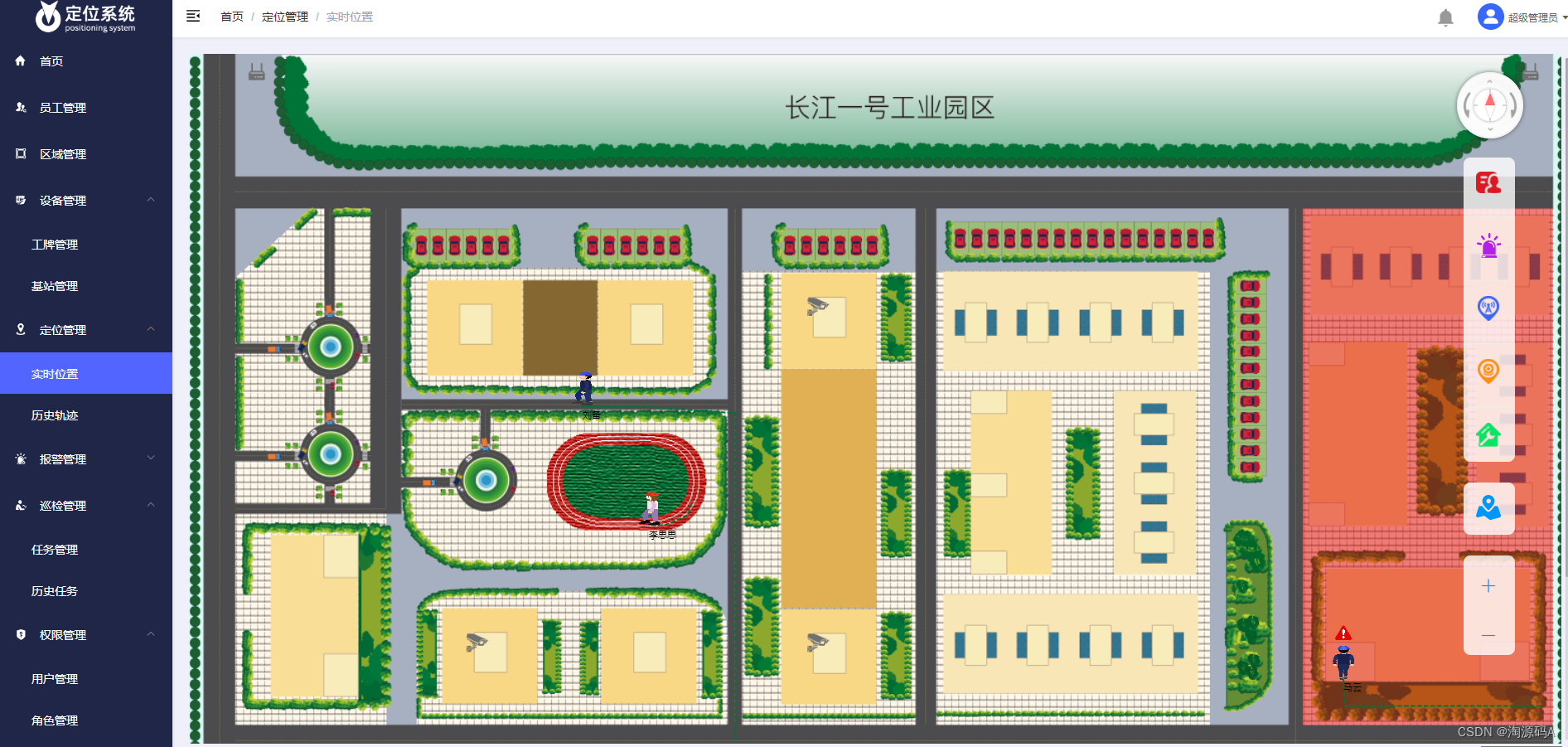

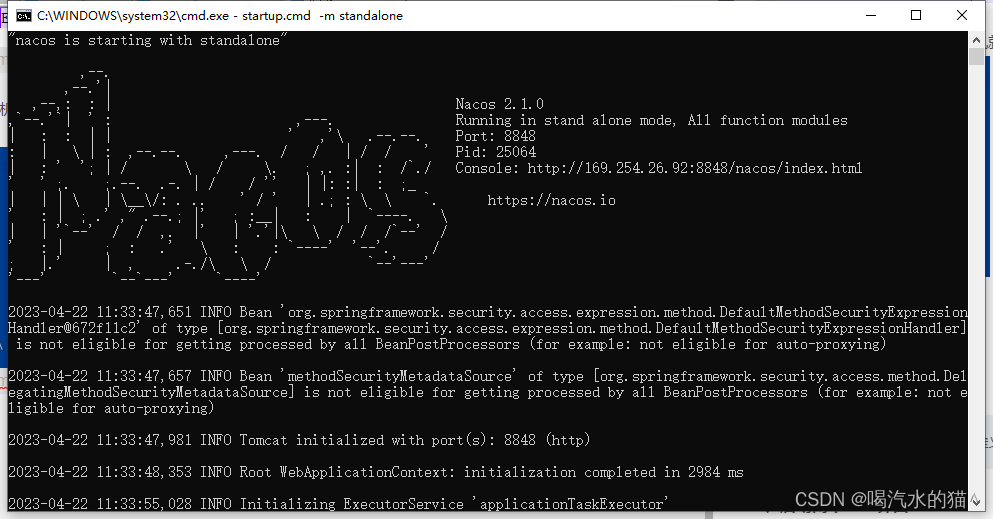




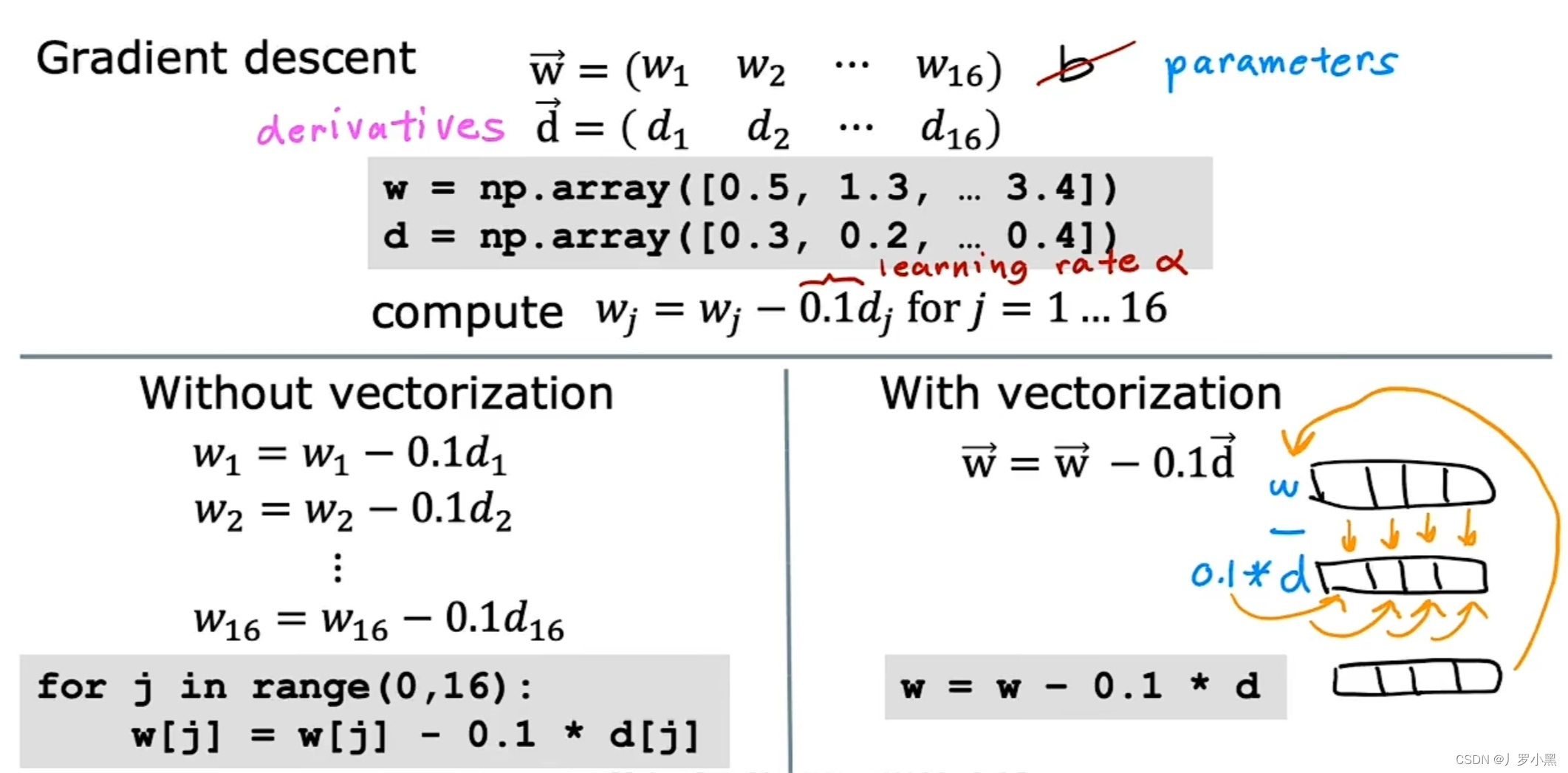
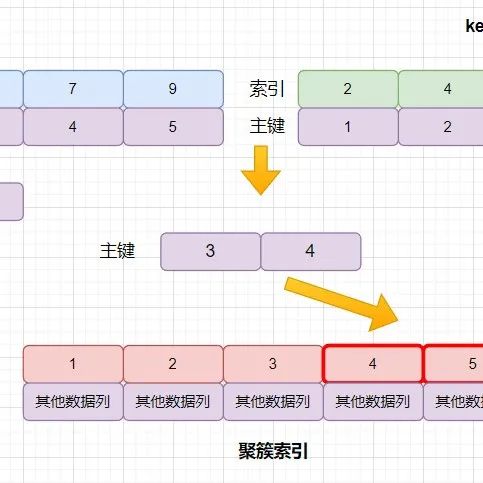




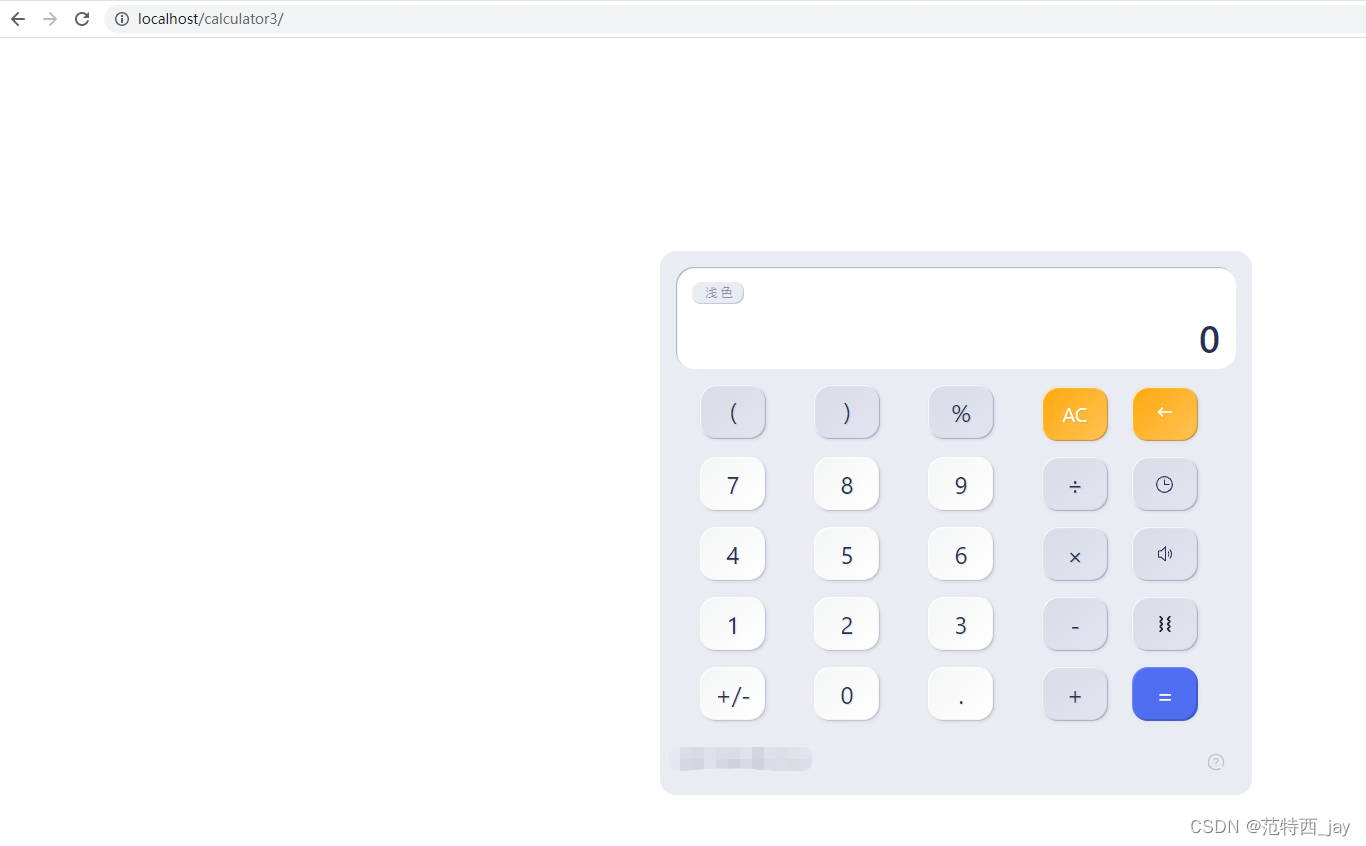



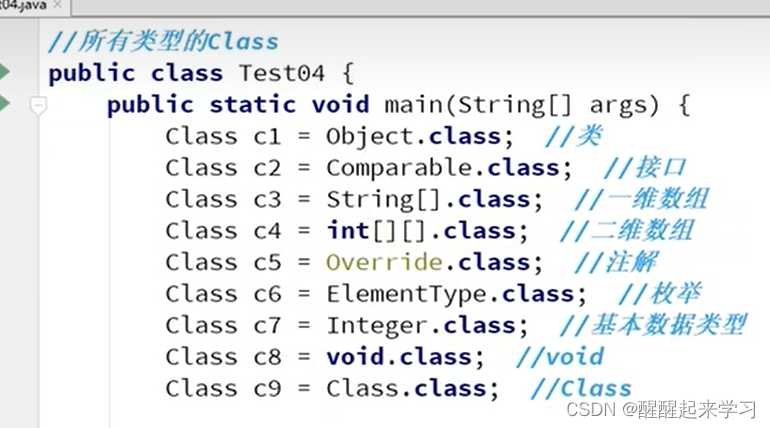
![P1027 [NOIP2001 提高组] Car 的旅行路线](https://img-blog.csdnimg.cn/img_convert/9aa5170d257ac59386393462641f645b.png)
